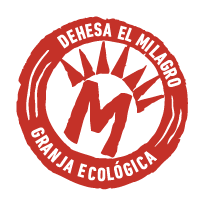Bovine Livestock
Our breeding cows are of the Iberian black Avilanian breed that is native to the central area of Spain. The stallions are Limousin breed. The result is a quality meat with an intense flavour and good infiltration of the Avilanian variety and more meaty tenderness from the limousin.
Avilanian cows are characterized by a high rusticity and by being great mothers with a high fertility index.
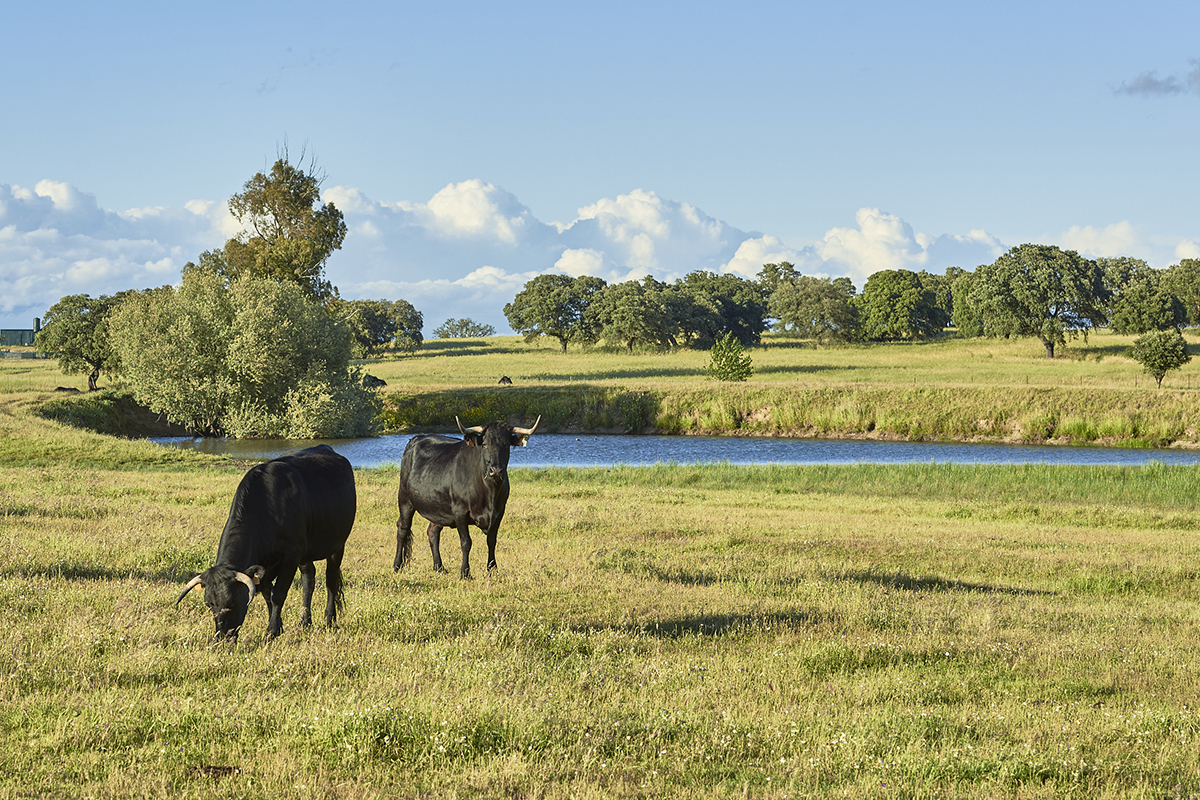
With free-range breeding and the need to access pastures continuously, the rotation of livestock is necessary. It greatly improves soil conditions and it helps to keep sustainable production structures taking advantage of the synergies of the farm: pasture-soil-organic matter.
The cattle ranch moves through the farm rotating through the more than 20 parks that we have approximately 85-95,000 sq. yd. The idea is that the animals stay for 3-4 days favouring the desired rest of at least 45-50 days between each animal pass.
The plan is that the passage of many animals in a short time favours their non-selective feeding and, in addition, a uniform manuring. Time helps the incorporation of the dung into the ground so when the livestock returns in the next pass, they do not discard to eat again in the same places. The pastures receive a generous rest time to recover.
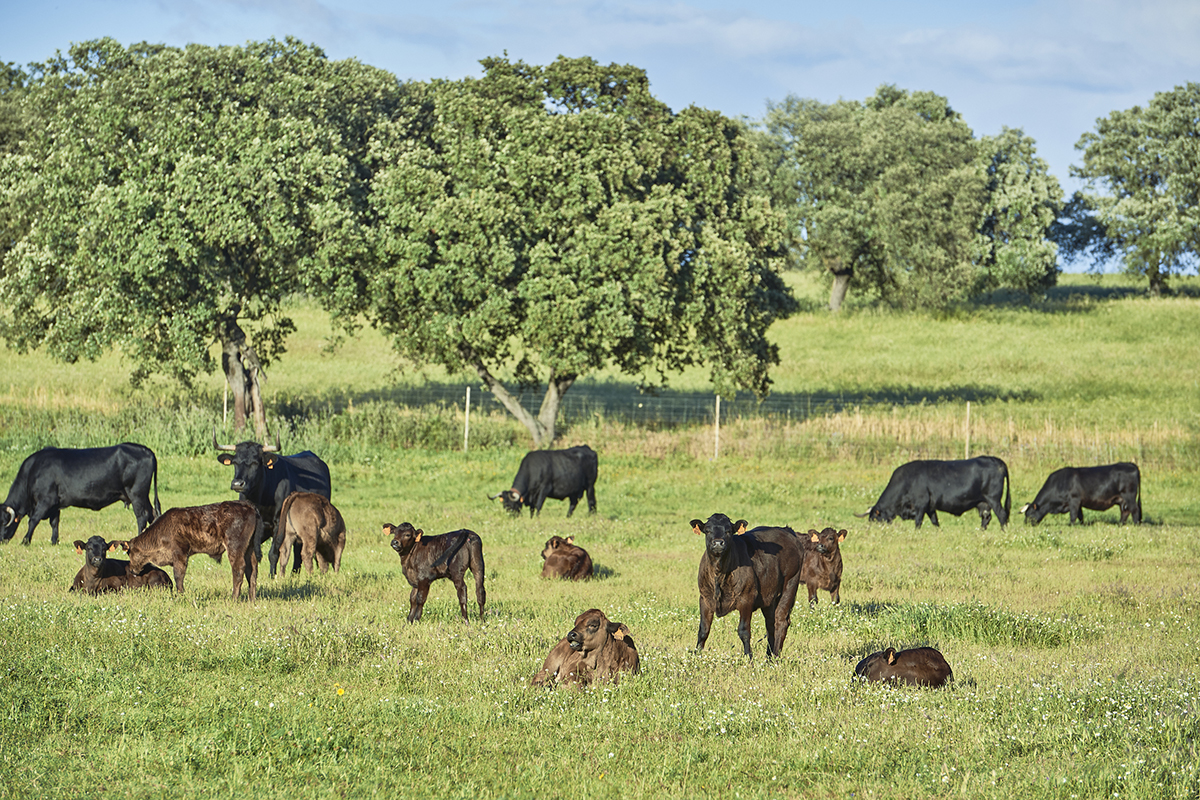
The result is that the soils change their structure, generating life. Animals are allowed to eat the plants up to a certain height so they are not depleted. This makes plant growth and life longer and therefore the production of roots in search for minerals is constant. The consequence is that when it rains the water infiltrates more in the soil and it evaporates less thanks to the vegetal cover that protects the ground. In addition, there is less runoff so less soil is lost. This system of direct contribution to the organic matter generates greater water retention, greater soil retention and, as a direct consequence, it increases grass production.
The calves grow in the field with their dams until they are six months old and, after weaning, they go through a finalization stage of another 6-8 months, in facilities with direct access to pasture. They also rotate and besides they receive an extra feed supply with an adequate percentage of protein to promote growth. The amounts and types of feed are modified until the end of the cycle, having 12-16 months old animals.
The advantages of this system are that the quality of the meat is very high. The animal always has access to pasture and this notably improves the ratio of omega 6 / omega 3 fatty acids in its meat. Grass feeding favours the nourishment of B-carotenes, which are the precursors of vitamins A and E. These vitamins are necessary for the formation of bones, eyesight, to reinforce the immune system or as preventives against cardiovascular diseases.
In Dehesa El Milagro natural mating is used. We have two stallions that are normally together to avoid competition problems and to foster brotherhood.
Ox
Our oxen of Avilanian breed are castrated males over four years old. They spend approximately 6 to 7 years in the fields. This native breed of the area is characterized by its succulent meat with its infiltrated fat. It is a totally exclusive piece on the market, since it is difficult to buy ox meat with these characteristics.
Our beef is unique, not only because of the scarcity of this product in the market, but also because of its organic certification.
Oxen raised in freedom throughout their life acquire great size, feeding on grass and a final completion period, complying at all times with the regulations that mark organic production, with at least 60% of the ration with forage and grass. Their meat enters the maturation process, of vital importance for this type of product, reaching up to 42 days for the noble parts of the carcass. This ripening time is essential to achieve optimal tenderness. During this process, moisture evaporates from the meat and the muscle gradually turns into a tender meat with excellent texture.
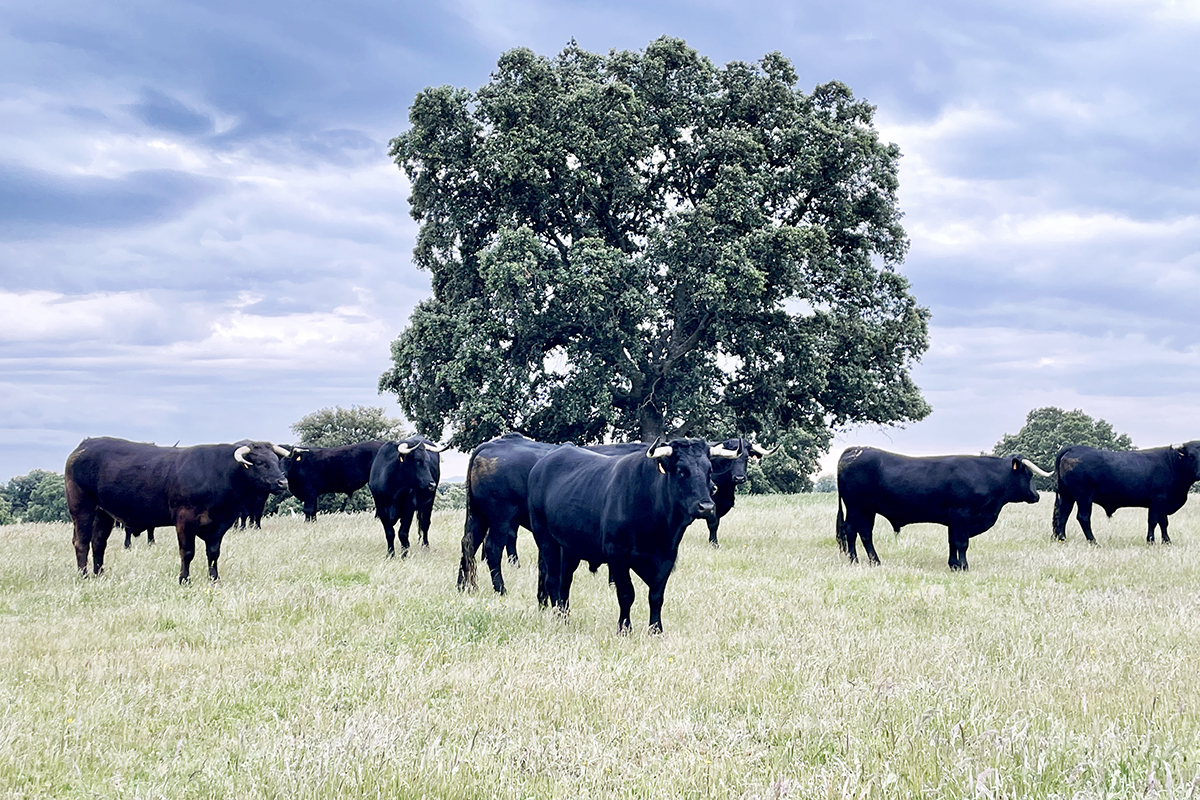
There are approximately 52 oxen. They accompany the rest of the livestock in the rotational grazing through the meadows and stubble of the farm. This helps them to improve their mobility and allows a natural diet that significantly influences the quality of the meat with a fine and firm texture.
They will go through a finishing stage of six months in our organic feedlot
but always without abandoning the pasture following both the regulation and our basic farm management concepts.
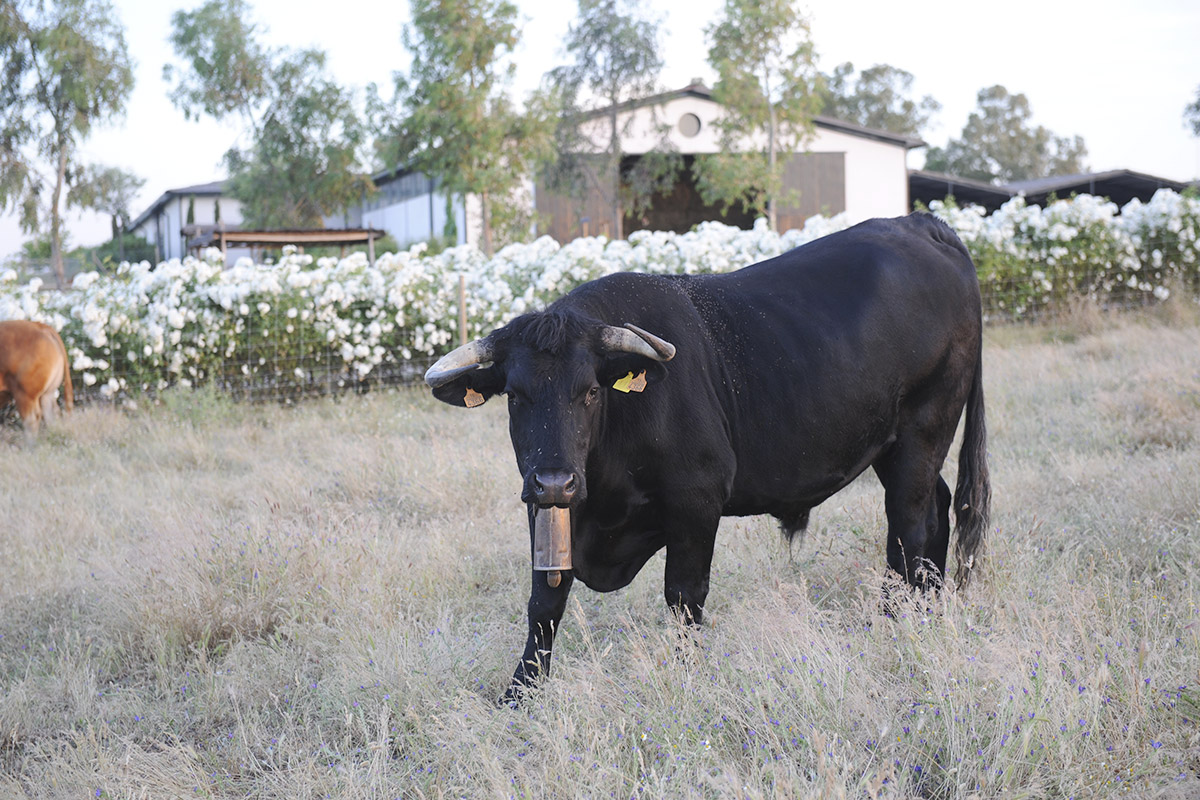
Beef is characterized by an intense red colour, with the characteristic streaky fat like the Iberian ham, and with a stronger flavour when tasted. The colour of the fat tends to turn yellow, indicating that the animal has had a natural diet mainly based on grass. Its meat is tasty with a powerful and sweet taste that stands out in the mouth for its tenderness, intensity, aroma and quality of flavour. It is rich in proteins, and minerals such as potassium, phosphorus, magnesium, vitamin B12 and essential amino acids for the human body, as well as containing a lot of easily assimilable iron.
Greater Beef
The cows, after finishing their gestation life, enter a finishing process of 3-4 months, thus obtaining a red, tender and tasty meat.
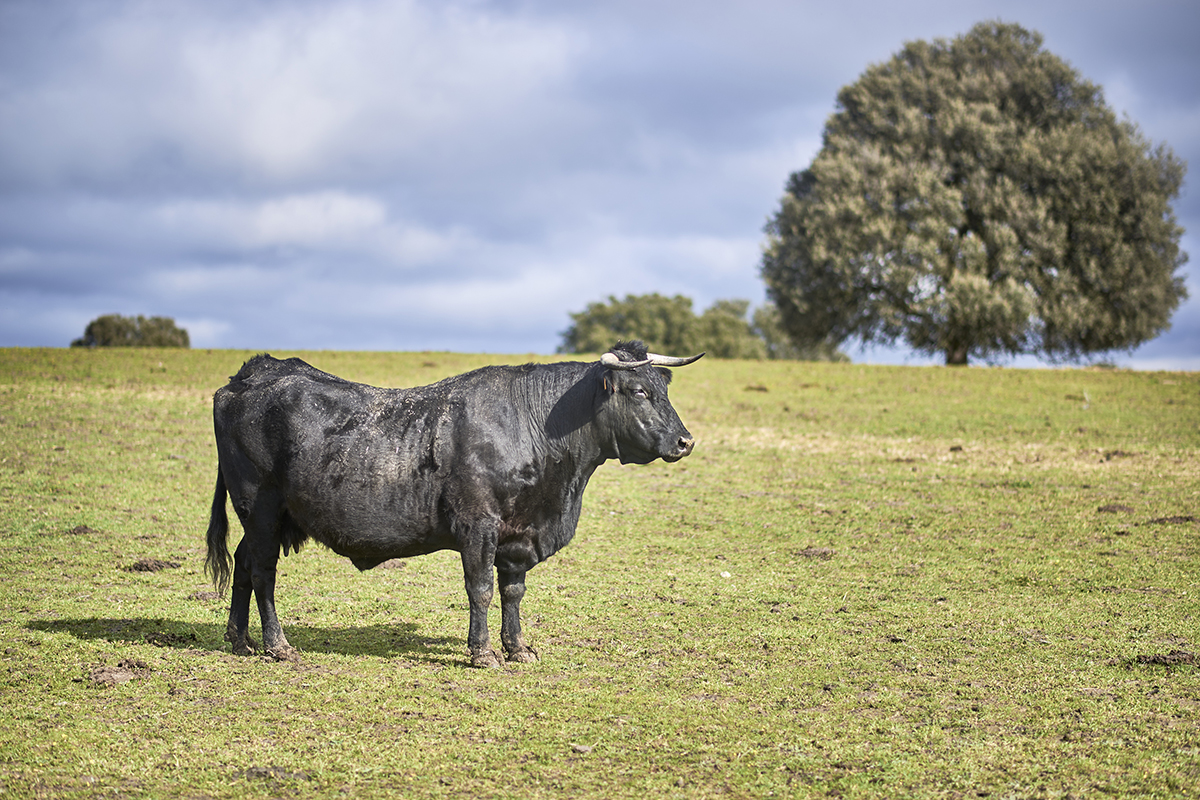
Extensive fattening, a very special feedlot
Our ecological feedlot is located in an annexed plot that has 215,000 sq. yd. The animals enter our farm destined to the fattening of the calves with an extensive system.
Animals rotate through our plots following the same management criteria as our livestock on the farm and when they reach the desired conformations, they go to the next stage that is carried out in smaller parks with a greater contribution of feed for a correct greasing and finishing off the ideal carcass.
We always meet the regulatory criteria which establishes that at least 60% of the feeding throughout the life of the animal has to be forage and pasture. Complying with this standard means that the desired organoleptic and nutritional characteristics are obtained in a homogeneous way.

Plots attached to the ecological feedlot destined for the rotation of livestock.
